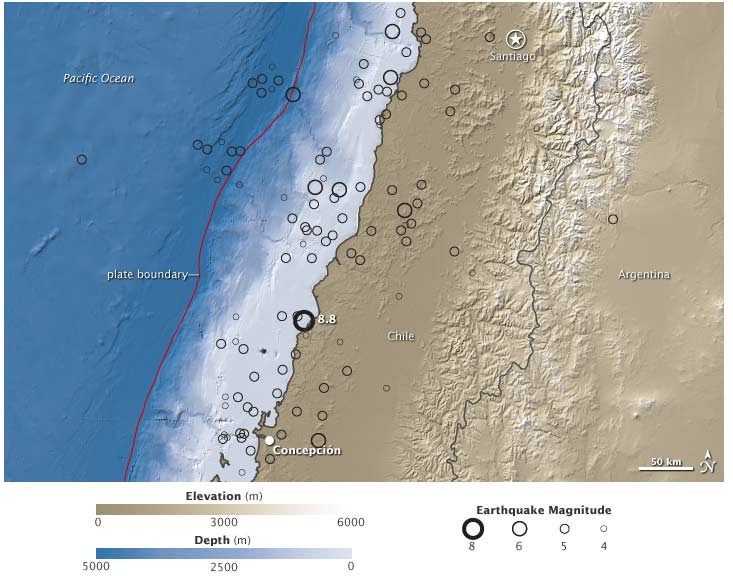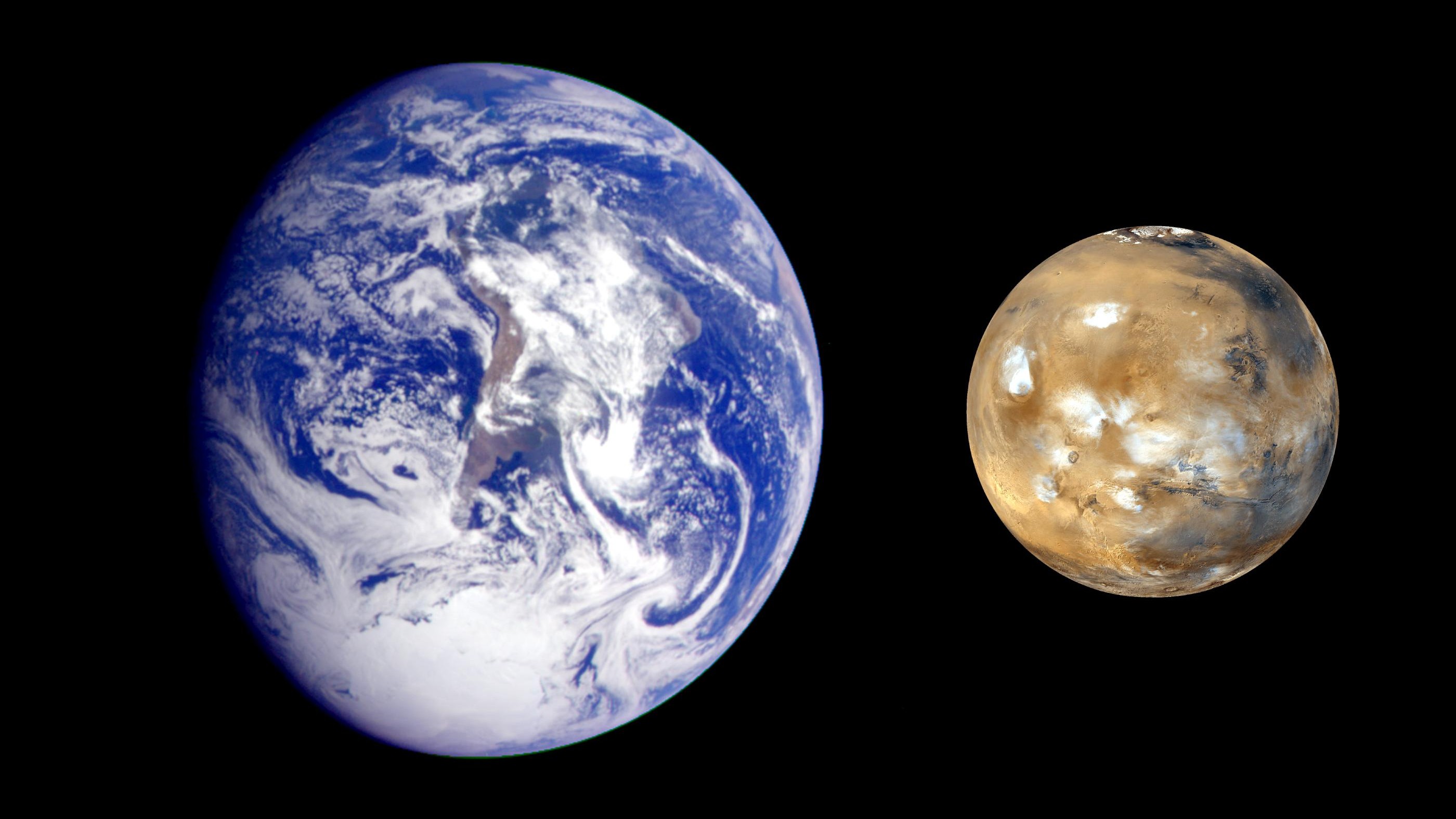Where the Quakes in Chile Struck

The 8.8-magnitude earthquake that devastated parts of Chile was the result of a collision between two giant slabs of Earth.
The jolt occurred along a so-called subduction zone, where one tectonic plate dives beneath another. In this case, the Nazca Plate is plowing under the South America Plate at an average rate of 3 inches (80 millimeters) a year. In addition to the Feb. 27 earthquake and others, the plate collision gives rise to the spectacular Andes Mountains.
A map released this week reveals how this plate-diving influences the landscape. To create the map, scientists compiled plate tectonics information, elevation data and ocean contour data. The ocean topography is based on data collected during the Shuttle Radar Topography Mission, which flew onboard Space Shuttle Endeavour in mid-February 2002.
Lighter colors indicate higher elevation on land and shallower depth in the water, with quake locations and magnitudes represented by black circles.
The boundary where the two plates converge is marked by a red line. But even without the line, a trench about 62 miles (100 km) offshore would mark the boundary. The trench occurs where the Nazca Plate begins its descent beneath the South America Plate. The trench is most sharply defined on the eastern (continental) side, where depth plunges rapidly from a few hundred meters (light blue) to several thousand meters (deep blue).
In places along their boundary, the two plates may slide easily past each other, but in other locations, they get locked together for a time. Eventually the pressure is too great for the rocks to withstand, and they break. The plates lurch past each other violently. The result: an earthquake. When large quakes occur underwater, the seafloor can heave or sink. This ground movement is what triggers a tsunami.
The Chilean coast has a long history of very large earthquakes. In fact, the Feb. 27 quake occurred about 140 miles (230 km) north of the strongest earthquake ever measured -- a magnitude 9.5 event that occurred in 1960. In 1922, a magnitude-8.5 quake occurred about 540 miles (870 km) farther north.
Get the world’s most fascinating discoveries delivered straight to your inbox.
- Chile Earthquake May Have Shortened Days on Earth
- Natural Disasters: Top 10 U.S. Threats
- Images: Deadly Earthquakes



